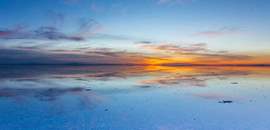Just weeks into the new year, financial markets have taken a noteworthy turn as investors assess what the Federal Reserve is contemplating for interest rates and its balance sheet this year. The minutes for the December Federal Open Market Committee (FOMC) meeting released earlier this month showed that some officials believe the economy is close to full employment and are worried that the Fed is behind the curve in fighting inflation. They also suggest that the Fed could start raising interest rates as soon as March and that it could subsequently begin to reduce the size of its balance sheet.
The news has impacted both the bond and stock markets. The 10-year Treasury yield at one point surged by about 35 basis points to 1.85 percent, exceeding its high for 2021. The stock market has also sold off since the beginning of this year, and the NASDAQ composite index fell into correction territory.
Previously, Fed officials had pivoted away from their long-standing view that the spike in inflation to a three-decade high was temporary. Following the December FOMC meeting, Fed Chair Jerome Powell stated that “the risk of higher inflation becoming entrenched has increased.” But there was little market reaction to the indication that the Fed was contemplating hiking rates in 2022, and many dismissed it on grounds that rate increases were already priced into markets.
So, what has changed to unsettle investors?
One consideration is that the FOMC minutes revealed that a growing number of Fed officials believe the economy is approaching full employment and that wage and price increases are becoming more widespread. Also, some question whether the gradual pace of rate hikes included in the Summary of Economic Projections that envision three quarter-point hikes this year will be adequate.
The consensus among market participants now is that March is a more likely start date than June for the Fed to raise rates. If so, the Fed could undertake four rate hikes this year.
Another consideration is that the Fed could reduce its holdings of government and mortgage-backed securities after it begins raising rates. Previously, when the Fed tapered bond purchases in the past decade it kept its holdings steady for two years before gradually reducing them in 2017. Now, it appears the Fed could be more proactive in shrinking its balance sheet, which could impact bond yields.
The big unknown is whether the FOMC minutes will finally convince investors that inflation is a problem and will require steady policy tightening that will impact markets.
The index of financial market conditions constructed by Goldman Sachs shows that they are the most accommodative in three decades. It considers the combined impact of Treasury yields, credit spreads, the stock market, and the value of the dollar on the economy. If inflation is to be contained, the impact of policy changes will be transmitted to the economy via these channels.
Amid all of the angst over inflation, one of the big surprises last year is that gold prices fell by 4 percent. This suggests that even though inflation was high, investors believed it would lessen over time.
One can draw a similar conclusion from two other widely followed market indicators—the shape of the Treasury yield curve and the trade-weighted value of the U.S. dollar.
Historically, the shape of the Treasury yield curve has been considered one the best indicators of economic activity. If investors thought the Fed was behind the curve, the Treasury yield curve would normally steepen, with long-term yields rising by more than short-term rates. However, while the yield curve has shifted higher, it has not changed shape over the past year. This suggests bondholders remain confident that the Fed will act in time to curb inflation.
The same applies to the U.S. dollar. If global investors believed the Fed was behind the curve, the dollar would normally weaken, whereas it appreciated by 3.5 percent on a trade weighted basis over the past year. The primary reason is that interest rate differentials favor the dollar, and the Fed is poised to raise interest rates this year while the European Central Bank and the Bank of Japan are on hold and the People’s Bank of China could ease rates. As a result, international investors continue to view the dollar as a safe haven.
The bottom line is that while skeptics believe the Fed is behind the curve, investors have not lost confidence in it. But if bond yields and the dollar were to drift higher, the stock market could encounter turbulence in the coming year after smooth sailing over the past seven quarters.
The principal stock market indices have all doubled in value from lows reached during March 2020, when the Fed lowered interest rates to zero and resumed quantitative easing to combat the coronavirus pandemic. High-flying tech stocks and speculative instruments such as bitcoin and other cryptocurrencies are among the primary beneficiaries of record-low interest rates. They, in turn, have been among the most adversely impacted by the concerns over rising interest rates.
Finally, some bondholders may shrug off the recent uptick in yields on grounds that Treasury yields stabilized last year after surging in the first quarter. Nonetheless, while they could tap the snooze button again, it is less likely this year with the Fed on the brink of tightening monetary policy and inflation running well above its 2 percent average annual target.
A version of this article was posted to TheHill.com on January 7, 2022.























